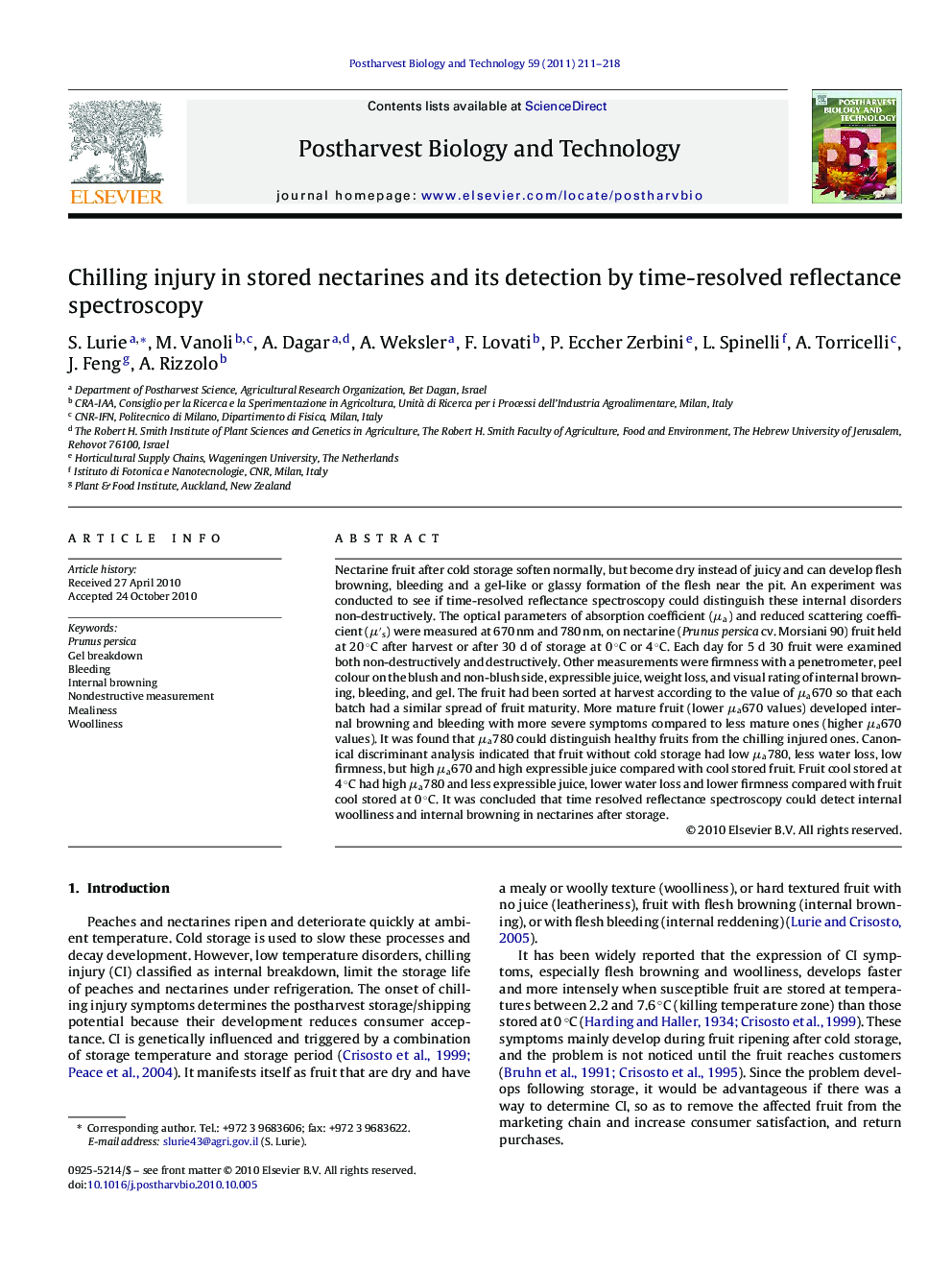| کد مقاله | کد نشریه | سال انتشار | مقاله انگلیسی | نسخه تمام متن |
|---|---|---|---|---|
| 4519034 | 1322814 | 2011 | 8 صفحه PDF | دانلود رایگان |

Nectarine fruit after cold storage soften normally, but become dry instead of juicy and can develop flesh browning, bleeding and a gel-like or glassy formation of the flesh near the pit. An experiment was conducted to see if time-resolved reflectance spectroscopy could distinguish these internal disorders non-destructively. The optical parameters of absorption coefficient (μa) and reduced scattering coefficient (μ′s) were measured at 670 nm and 780 nm, on nectarine (Prunus persica cv. Morsiani 90) fruit held at 20 °C after harvest or after 30 d of storage at 0 °C or 4 °C. Each day for 5 d 30 fruit were examined both non-destructively and destructively. Other measurements were firmness with a penetrometer, peel colour on the blush and non-blush side, expressible juice, weight loss, and visual rating of internal browning, bleeding, and gel. The fruit had been sorted at harvest according to the value of μa670 so that each batch had a similar spread of fruit maturity. More mature fruit (lower μa670 values) developed internal browning and bleeding with more severe symptoms compared to less mature ones (higher μa670 values). It was found that μa780 could distinguish healthy fruits from the chilling injured ones. Canonical discriminant analysis indicated that fruit without cold storage had low μa780, less water loss, low firmness, but high μa670 and high expressible juice compared with cool stored fruit. Fruit cool stored at 4 °C had high μa780 and less expressible juice, lower water loss and lower firmness compared with fruit cool stored at 0 °C. It was concluded that time resolved reflectance spectroscopy could detect internal woolliness and internal browning in nectarines after storage.
Research highlights▶ At harvest nectarine fruit were measured with time resolved reflectance spectroscopy (TRS) and stored 30 d at 0 °C or at 4 °C. ▶ After storage fruit were measured daily for ripening and storage disorders. ▶ More mature fruit (lower μa670 values) developed more internal browning and bleeding and less expressible juice. ▶ Absorption coefficient μa780 distinguished healthy fruit from chilling injured fruit. ▶ TRS can detect internal woolliness and browning in nectarines after storage.
Journal: Postharvest Biology and Technology - Volume 59, Issue 3, March 2011, Pages 211–218